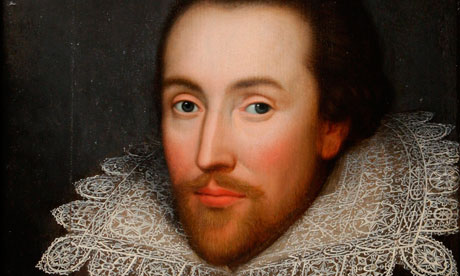Sonnet 1 is the first of the 154 sonnets written by the English playwright and poet William Shakespeare. It is a procreation sonnet within the Fair Youth sequence. The poem is essentially about the dynamic relationship between transience and continuity of beauty. It expounds on the fact that beauty is temporary at an individual level but achieves permanency at the lineage level. A person lasts for only a short time. But the human race endures, and a person’s qualities continue to exist through his successors.
About the Poet:
Often called England’s National Poet, William Shakespeare is widely regarded as the greatest dramatist in the English language. Also known as the Bard of Avon, his works include approximately 38 plays, including collaborations, 154 sonnets, two long narrative poems, and some other verses of uncertain ownership.
Sonnet 1: Setting
As the first sonnet, Sonnet 1 introduces many themes that could be said to provide a base and sets the tone for the rest of his sonnets. This sonnet was essentially disruptive to the tradition of sonnets at that time (the early 1600s). The sonnets usually were about a speaker (the lover, usually male) writing to his beloved (usually female). Shakespeare’s sonnets disrupt this concept of erotic courtship. In this sonnet, the speaker (could be Shakespeare himself, or could be someone else) implores a beautiful young to overcome his self-obsession and procreate. The speaker is not courting this young man. The speaker here is assumed to be male. He is not courting the young man but encouraging him to reproduce. This was drastically different from the sonnets of those times.
Sonnet 1: Summary
The poet begins by expressing his desire for the multiplication of beautiful creatures. The reason for this, as the poet explains, is to ensure that their beauty is never extinguished and continues to exist in their heirs. The poet then addresses a young man directly and tries to explain how his self-obsession is blinding him to the fact that his beauty is transient. This self-obsession is preventing the young man from realizing the importance of continuing his lineage, the poet says. He states that it would be a miserly act to hoard all his beauty instead of allowing it to flow through eternity. The poet says that he owes it to the world, which has given him this beauty, to keep his beauty alive through future generations.
Sonnet 1: Critical Summary
Shakespeare’s Sonnet 1 explores the themes of beauty, procreation, a continuation of lineage, passage of time, death, and self-obsession.
Quatrain 1:
The poem begins with the line, ‘from fairest creatures; we desire increase.’ ‘Fair,’ here, refers to physical beauty. The poet proclaims that it is from these ‘fairest’ that we seek progeny. The reason for this is explained in the following three lines. Human lives are transient. Even the most beautiful succumb to the flow of time. The blooming beauty of youth is like a rose. But although an individual is short, his beauty can transcend time through his progeny. The poet refers to this progeny as ‘his tender heir.’ The person’s beauty would be borne by his heir after his demise.
Quatrain 2:
In the second quatrain, the speaker directly addresses a young man. This individual is self-obsessed and can be said to represent a section of society that suffers from the same malaise. This person is only capable of observing his own beauty and is restricted by his own bright eyes. He attempts to feed his beauty with self-praise and flattery. This also invokes the image of a candle that is gradually consuming itself. His ego is sustained by his exaggerated opinion of himself. The young man is blinded by this self-obsession. He is not able to think beyond himself and his own beauty. He shows no interest in passing on his beauty to the next generation by procreating. His abundant beauty will die with him, thus ‘making a famine where abundance lies. The young man is his own worst enemy, the speaker says. His self-obsession and indifference to procreation is an act of cruelty to himself.
Quatrain 3:
In the third quatrain, the speaker attempts to explain to this young man why he should change his mind. Shakespeare imagines this man’s youth as a fresh ornament of the world. He is bursting with the promise of beauty, a sign of the coming spring. But the promise can only be fulfilled through his heirs over time as the inherited beauty magnifies over successive generations. Without procreation, the promise of future beauty will die off like a bud that does not bloom. In time, his youth will abandon him, and he will finally die and be buried with the seed of his heir still within him and the promise of beauty unfulfilled. It is as if his beauty will not be able to reach its full potential through subsequent generations and will end like a flower bud that never achieved full bloom. In the final line of the quatrain, the speaker rebukes the young man (‘churl’ refers to man) for being miserly about spreading his beauty. It is as if he is wasting his beauty.
Couplet:
In the couplet at the end of the poem, the speaker’s tone becomes even harsher. He presents a choice to the young man. The choice of procreating for the sake of the world or taking what he owes to the world to his grave. The poet compares this act of taking one’s beauty to one’s grave to gluttony. The poet states that the young man owes it to the world to continue his lineage. This is his moral responsibility. By taking his beauty to his grave without passing it on to the next generation, he is acting like a glutton who consumes his own share and that portion that he owes to others.
Sonnet 1: Poetic Devices
Alliteration:
Line 1: ‘from fairest’
Line 2: “That thereby’
Line 8: ‘thyself thy,’ ‘to thy’
Consonance: Line 1: Using the letter ‘r.’
Line 4: Using the letter ‘R
Line 6: Using the letter ‘I Metaphors: Line 2: ‘beauty’s rose’
Line 6: ‘light’s flame,’ ‘self-substantial fuel’
Line 11: ‘Thine own bud’ Repetition:
Line 9: ‘that art’
Line 11: ‘within thine,’ ‘thine own bud’
Sonnet 1: Central Idea
The poem’s central idea is how beauty, which is temporary at an individual level, can become something permanent when seen at the lineage level. This leads the speaker to appeal to a beautiful young man to escape his self-obsession and procreate to preserve his beauty for eternity.
Sonnet 1: Tone
The poem starts on a philosophical tone as the poet explains how beauty can be transient yet permanent, moves towards a pleading tone as the speaker tries to convince the young man to stop his self-obsession and procreate, and ends with a slight rebuke as the speaker explains to the young man that it would be selfish for him not to procreate and continue his beauty.
Conclusion- The poem is written in a pretty direct style and breaks two major conventions of sonnets of the earlier times – a subject is a man, and the speaker is not trying to woo the subject.
Some online learning platforms provide certifications, while others are designed to simply grow your skills in your personal and professional life. Including Masterclass and Coursera, here are our recommendations for the best online learning platforms you can sign up for today.
The 7 Best Online Learning Platforms of 2022
- Best Overall: Coursera
- Best for Niche Topics: Udemy
- Best for Creative Fields: Skillshare
- Best for Celebrity Lessons: MasterClass
- Best for STEM: EdX
- Best for Career Building: Udacity
- Best for Data Learning: Pluralsight













